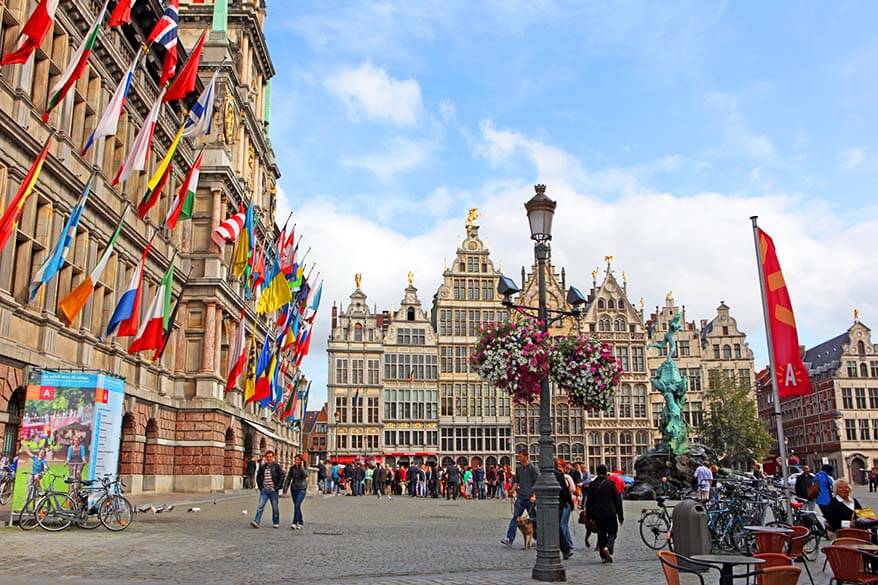The Hague, known locally as Den Haag, is one of the most captivating cities in the Netherlands. Often regarded as the country’s political center, it is home to the Dutch parliament, the International Court of Justice, and numerous embassies. But beyond politics, The Hague has so much more to offer: grand architecture, golden-age art collections, royal palaces, and even a vibrant beach scene. Whether you’re drawn to culture, history, or seaside relaxation, this city has something for everyone. Here is a guide to the five best places to visit in The Hague that highlight its charm and diversity.
1. Binnenhof and the Ridderzaal
If there is one place that truly defines The Hague, it is the Binnenhof, a medieval complex that has served as the political heart of the Netherlands for centuries. Surrounded by the tranquil Hofvijver lake, this historic site feels like a step back in time, yet it remains alive with the pulse of Dutch democracy.
The highlight here is the Ridderzaal (Hall of Knights), a Gothic-style building where the Dutch King delivers the annual “Prinsjesdag” speech to open parliament. With its soaring wooden roof and stained-glass windows, the Ridderzaal is both elegant and imposing. Visitors can book guided tours to explore the complex, walk its courtyards, and learn about the country’s political traditions. At night, the illuminated arches and reflections on the water make it one of the most photogenic spots in the city.
2. Mauritshuis Museum
For art lovers, the Mauritshuis Museum is a dream destination. Despite its compact size, it houses some of the most important works of the Dutch Golden Age. The museum’s crown jewel is Johannes Vermeer’s “Girl with a Pearl Earring”, often called the “Mona Lisa of the North.” Standing before this masterpiece in such an intimate setting is an unforgettable experience.
Other highlights include Rembrandt’s “The Anatomy Lesson of Dr. Nicolaes Tulp” and works by Frans Hals and Jan Steen. The Mauritshuis itself, a 17th-century palace, is an architectural gem. Its elegant galleries make the experience of viewing these masterpieces even more special. The museum is conveniently located right next to the Binnenhof, making it easy to combine both visits in a single day.
3. Peace Palace
The Peace Palace stands as a global symbol of justice and diplomacy. Completed in 1913, this magnificent building is home to the International Court of Justice, the Permanent Court of Arbitration, and a world-class legal library. Its red-brick exterior and soaring clock tower make it one of the most beautiful landmarks in The Hague.
While entry to the courtrooms is limited, visitors can book guided tours of the palace. These tours showcase its grand halls, stunning stained glass, and unique gifts from different nations, such as a vase from Russia and carpets from Iran. The surrounding gardens are also open for exploration, offering a peaceful environment that reflects the palace’s mission. For anyone interested in global affairs, the Peace Palace is both inspiring and educational.
4. Scheveningen Beach
While many cities boast cultural treasures, few can also claim a lively seaside escape just minutes away. Scheveningen Beach, The Hague’s coastal district, offers a perfect getaway from the city center. The long stretch of golden sand is ideal for swimming, sunbathing, or simply enjoying a seaside stroll.
The Scheveningen Pier is the star attraction here. With its panoramic Ferris wheel, restaurants, and even a bungee-jumping platform, it adds excitement to the traditional beach experience. The boulevard is lined with cafés serving fresh seafood, where you can try Dutch specialties like herring or kibbeling (fried cod bites). Summer brings festivals and concerts to the beachfront, while winter transforms it into a cozy spot for long walks and hot drinks by the sea.
5. Escher in Het Paleis (Escher in the Palace)
For something truly unique, visit Escher in Het Paleis, a museum dedicated to the world-renowned Dutch graphic artist M.C. Escher. Located in a former royal palace, the museum combines royal grandeur with mind-bending art. Escher’s works, famous for their impossible staircases and optical illusions, are displayed across multiple floors, showing his evolution from landscape sketches to intricate mathematical patterns.
The interactive exhibits make the experience engaging for all ages. Visitors can step into installations that bring Escher’s illusions to life and even take photos in rooms designed to play tricks on perspective. Beyond the art, the palace itself is worth exploring. Its regal chandeliers, designed by artist Hans van Bentem, add a modern twist to the classical interiors.









